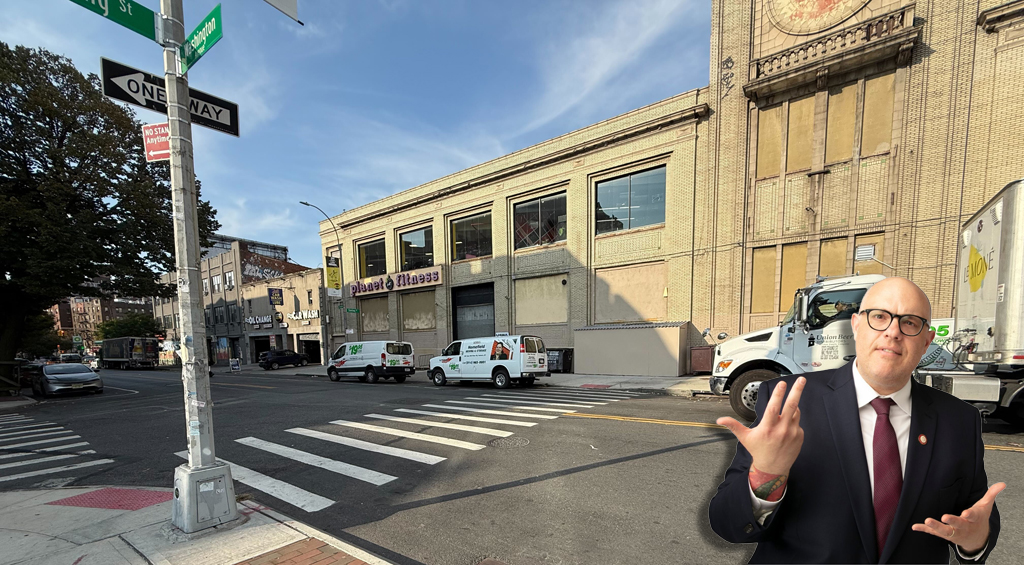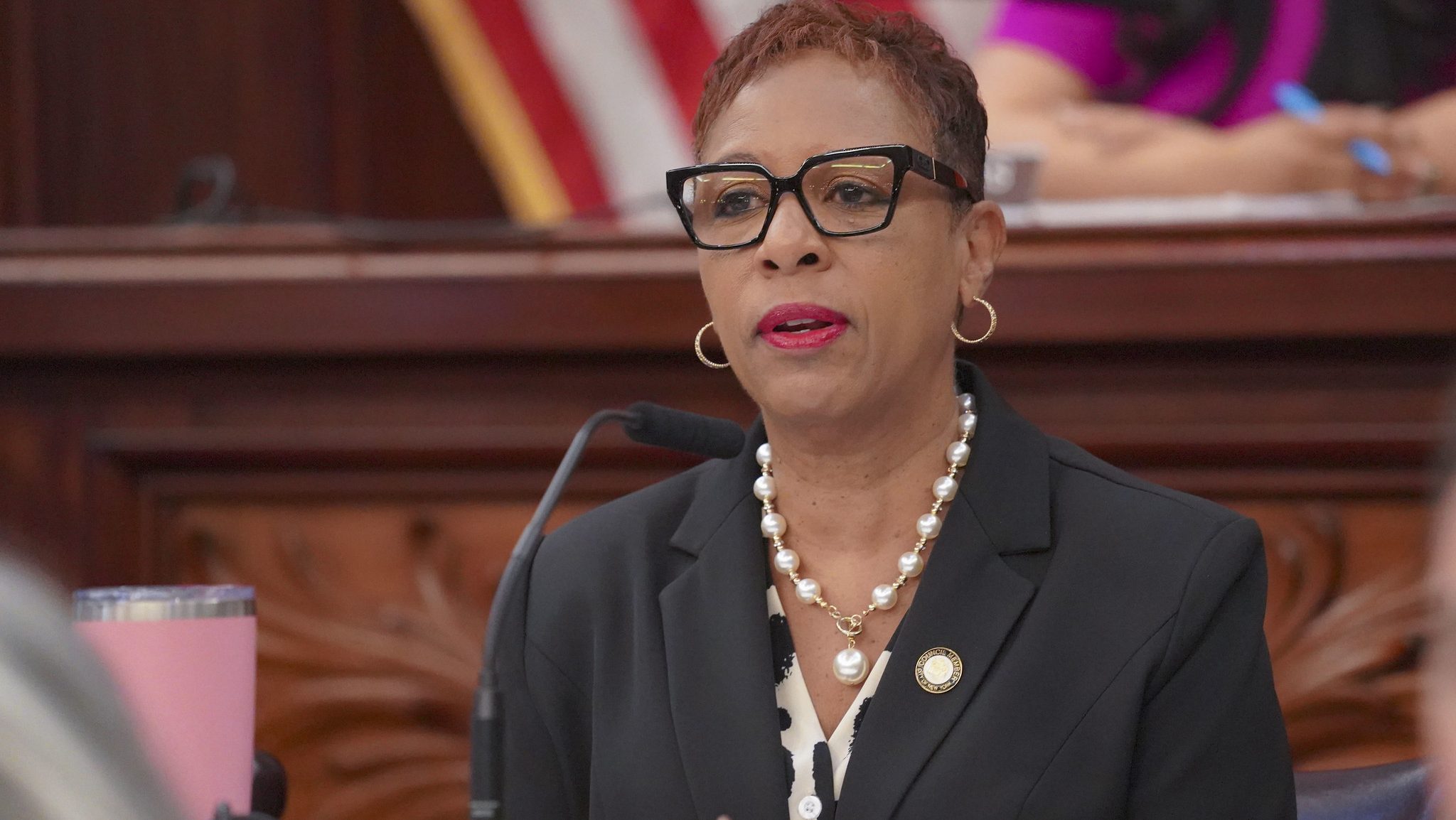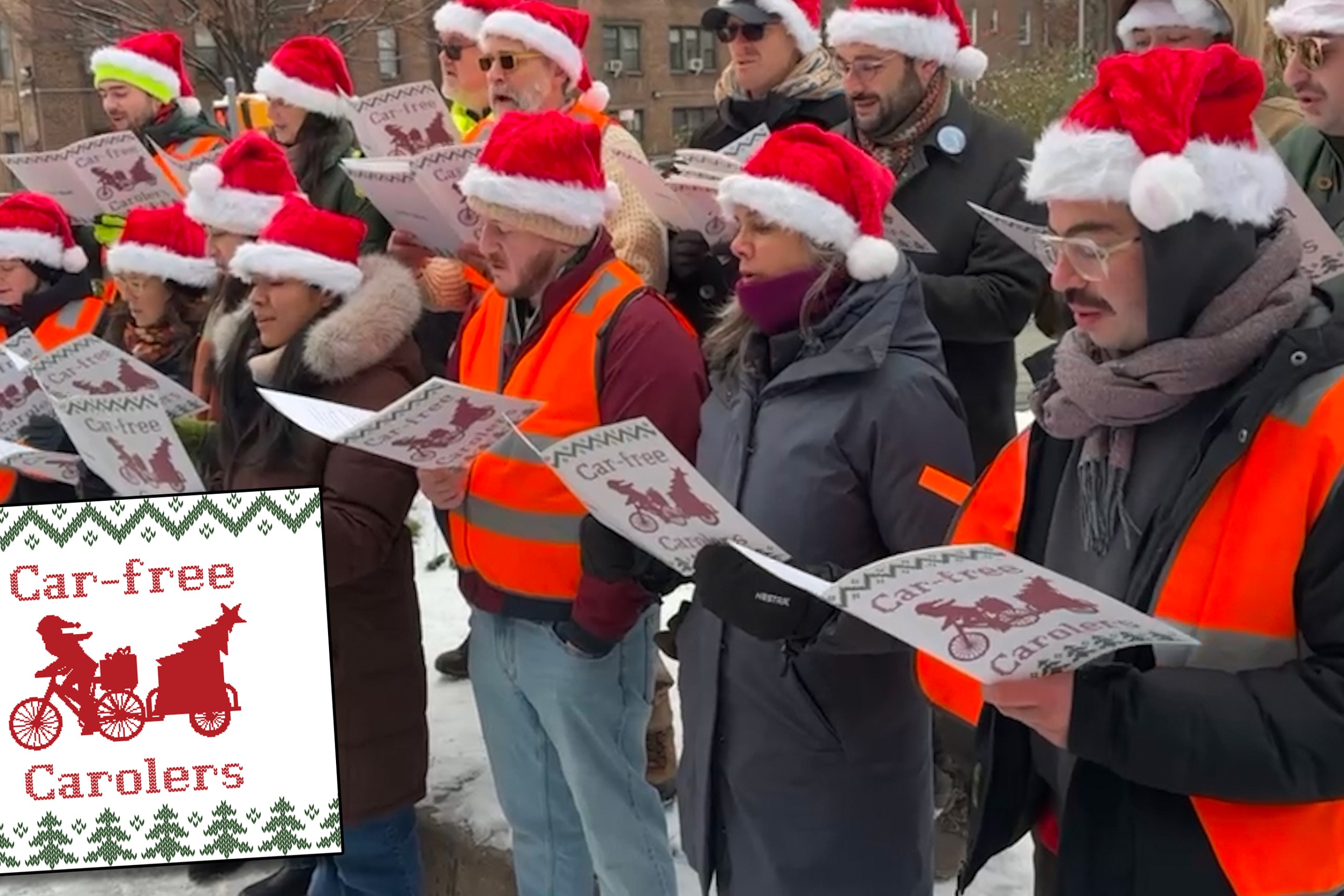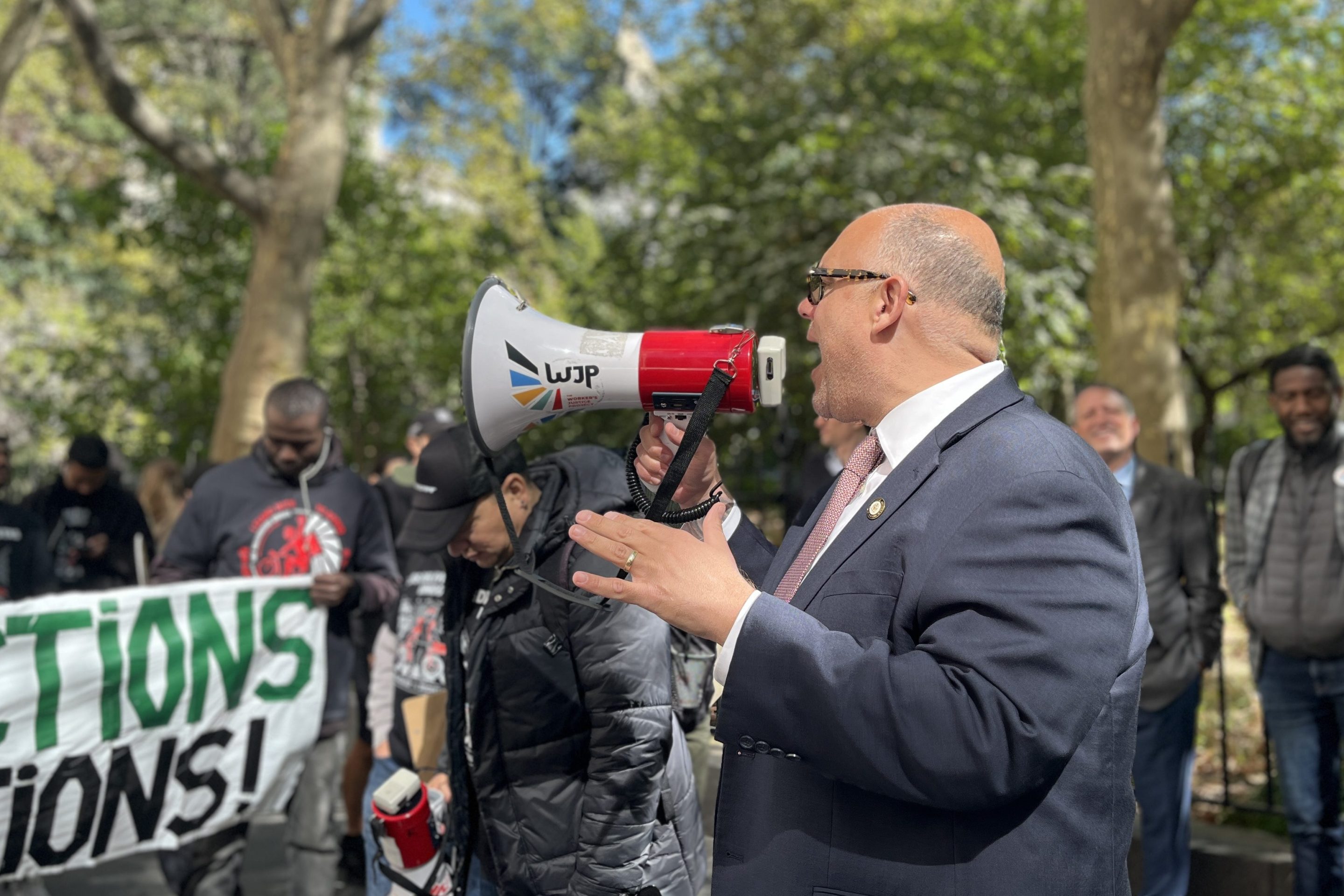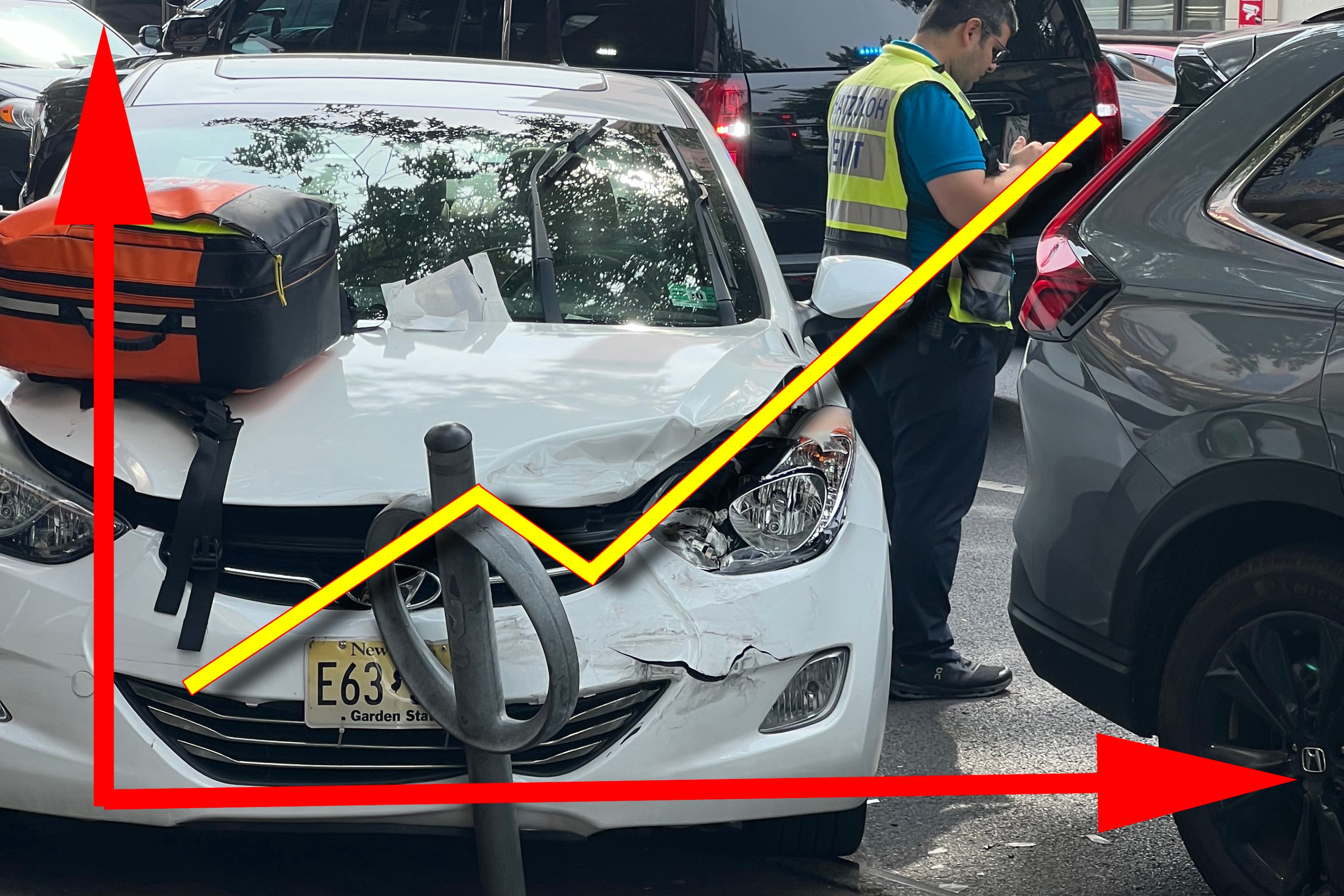All signs say this is a no-brainer.
The city would be forced to put traffic signals or stops signs at the thousands of intersections without them, whether or not they have painted crosswalks, under a bill that will be introduced on Thursday by Bay Ridge Council Member Justin Brannan.
"No later than Jan. 1, 2027, the [city] shall install a stop sign or a traffic control signal at all crosswalks," reads the bill, which would create a new section of the city Administrative Code, just after section 19-189.1 about bollards.
It sounds like a common-sense piece of legislation, given that so many painted crosswalks — such as mid-block crosswalks — offer only a suggestion of safety without a demonstrative sign or light to really stress to drivers the need to be alert..
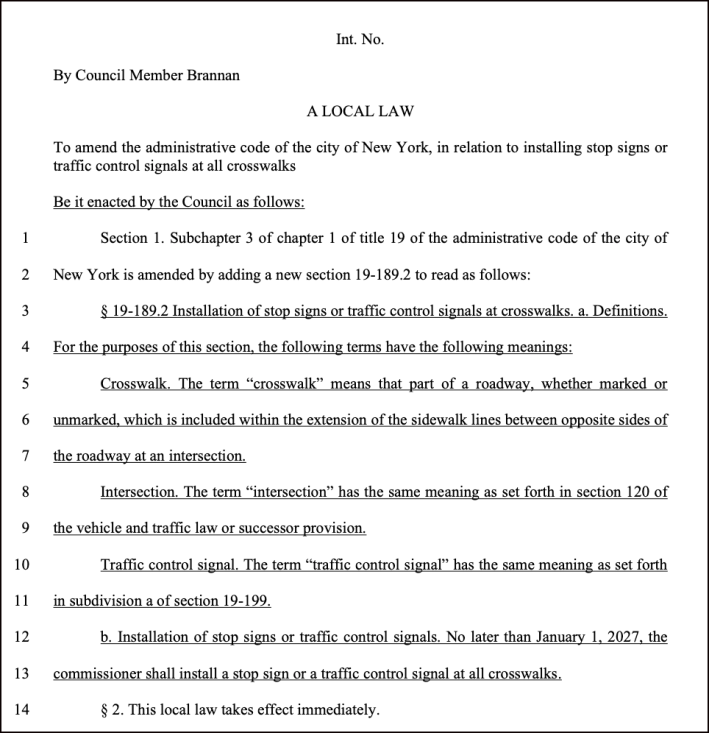
"Crosswalks without stop signs are dangerous because they create unclear expectations," Brannan told Streetsblog. "Pedestrians see the stripes and assume it’s safe to cross, but drivers aren’t required to stop unless someone is already crossing. That hesitation and confusion gets people hurt."
The Department of Transportation says on its website that it is in compliance with national best practices. The agency "only marks crosswalks that meet U.S. federal guidelines for traffic controls determined by the Manual on Uniform Traffic Control Devices," a national set of standards.
The agency also said that the MUTCD advises against too many stop controls on the grounds that it can increase noncompliance, rear-end collisions and add delays for drivers.
But hanging one's hat on the MUTCD (as insiders call it) is also seen as a race to the bottom. For instance, the manual says that a "traffic control signal" is warranted at a mid-block crosswalk if it won't significantly reduce vehicle throughput by, for example, making drivers stop again so shortly after stopping at a red light at a nearby intersection.
But it's not as if the DOT ignores the need to alert drivers to places where pedestrians will want to cross. The agency has created "enhanced crossings" to "meet the community need for marked crossings" in situations where the MUCTD would say that traffic controls are "not appropriate."
According to a video on the DOT website, an enhanced crossing that sometimes features a sign alerting drivers to the presence of pedestrians or an island in the middle of a wide street to give pedestrians a place to wait for traffic from the other side.
"Enhanced crossings" are only installed in spots where there is relatively low traffic, very long distances between other crosswalks or near parks, schools or transit.
Brannan doesn't think such crosswalks are enough.
"I’m tired of having to settle for enhanced crossings when what’s really needed is a stop sign or a traffic light," he said. "Painted lines alone just aren’t enough. This bill would change that."
Brannan said he was inspired to draft the bill after "multiple fights over the years with DOT trying to get signage for streets that already had crosswalks." There are roughly 44,000 intersections in city, of which 14,000 are signalized and thousands more have stop signs. The remainder don't.
"This bill may seem like an obvious thing," he added. "But I said to myself, 'How could this not be the law?'"
Activists agree.
“Council Member Brannan’s bill is a life-saving measure," said Jackson Chabot, director of Advocacy and Organizing at Open Plans (a livable streets group that shares a parent company with Streetsblog). "Painted crosswalks without daylighting and visibility are deadly illusions, leaving New Yorkers at risk every day. Requiring stop signs or signals at every crosswalk is common sense, holistic, and overdue — our streets must put human lives first at every intersection."
The DOT declined to comment the bill beyond that it will "review" it. On background the agency said the bill is far too broad because it will cover literally every intersection.
